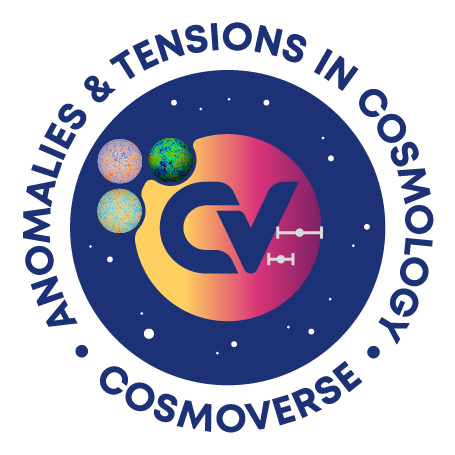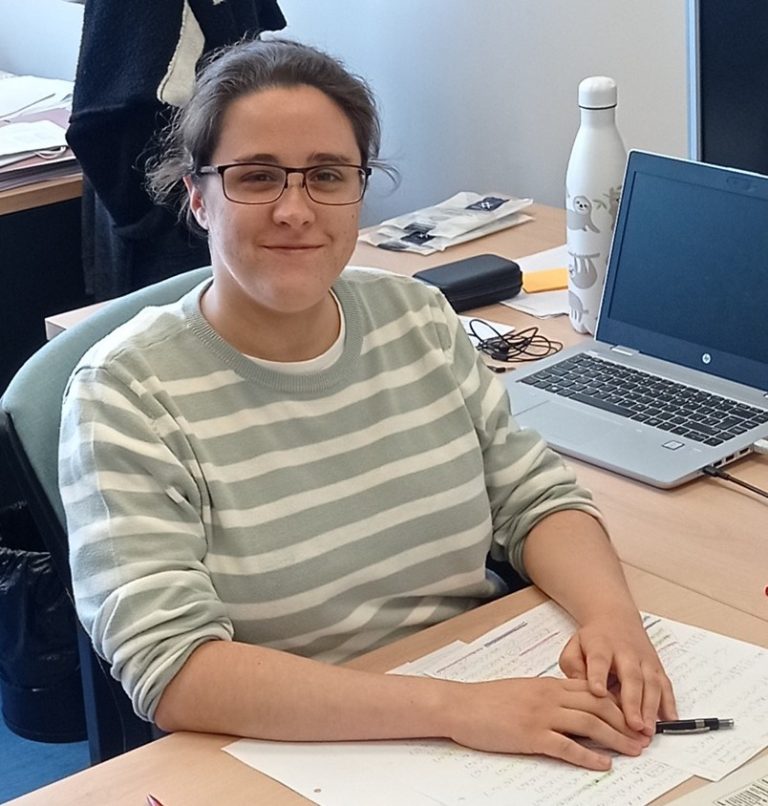What is your name, affiliation, academic position, and job title?
I am Patricia Diego Palazuelos, a PhD student at the Observational Cosmology and Instrumentation group of the Instituto de Física de Cantabria. This fall, I will present my PhD thesis, which is dedicated to the analysis of the cosmic microwave background (CMB) polarisation.
What is your journey? (Where did you live, learn and work?)
I am from Santander, a small city on the north coast of Spain famous for its beautiful bay and rainy days. I did not have to move towns for my higher education. I completed my Physics degree and master’s in Particle Physics and Cosmology at the Universidad de Cantabria. The Instituto de Física de Cantabria, where I work now, is also in Santander.
What is your field of research and/or what project are you involved in?
I have worked on several projects related to the analysis of CMB polarisation data, such as the delensing of B modes or the detection and characterisation of compact extragalactic sources. However, in the last two years, I’ve been mostly focused on the measurement of isotropic cosmic birefringence. I am also a member of the LiteBIRD collaboration. LiteBIRD is a satellite mission of the Japanese space agency (JAXA) that will obtain a full-sky map of the CMB’s polarisation with unprecedented precision.
What are your research plans?
After finishing my PhD, I will move to Munich for a three-year postdoctoral fellowship at the Max Planck Institute for Astrophysics. There I would like to continue investigating cosmic birefringence and its potential connections with axion-like particles, early dark energy, and other parity violations. I am sure new and exciting projects will also present themselves in the following years!
How does CosmoVerse fit within those plans?
As a young researcher, I still have much to learn about cosmology and the observational tensions that challenge our current understanding of the Universe. CosmoVerse is the perfect forum to explore these anomalies, the potential connections between them, and the new theories proposed to solve them.
What are the most exciting open questions in your research area?
The most immediate question is whether the birefringence signal that we have found is real or not. To either confirm or dismiss it, we will need high-precision CMB polarisation data, improved calibration techniques, and a better understanding of Galactic dust emission. Once we achieve that, more intriguing questions open up. What is producing cosmic birefringence? Could it be related to the signs of parity violation that are also appearing in large scale structure surveys?
What advances or new results are you excited about or looking forward to?
Regarding cosmic birefringence, I am eager to see the new results coming from ground-based CMB experiments like BICEP3 now that they are implementing calibration techniques that allow a precise calibration of polarisation angles. I am excited to see if they can (hopefully) confirm the birefringence signal that we found in Planck and WMAP data without relying on Galactic dust emission.
What is your view on cosmic tensions? How does your work connect with this open question in the community?
Some of the tensions worrying the community (like the Hubble or σ8 tensions) arise from discrepancies in the measurements of cosmological parameters obtained from local probes and CMB data. With several ground- and space-based experiments on the way, I would like to see what more insight CMB polarisation can give us into the CMB side of these tensions. In particular, observables like cosmic birefringence offer an additional channel to study some of the solutions proposed to alleviate cosmic tensions like early dark energy or axion-like particles.
What role do you think a community network like CosmoVerse can play in developing theoretical astroparticle physics and cosmology?
I think the power of a network like CosmoVerse lies in its ability to connect people specialising in different aspects: from the theorists developing new models, to the experimentalists focused on the analysis of different datasets, or the instrumentalist designing the actual detectors. Putting these three communities in the same room will help us understand the impact instrumental systematics have on our measurements and find new observables and more robust analysis methods to test new cosmological models.

